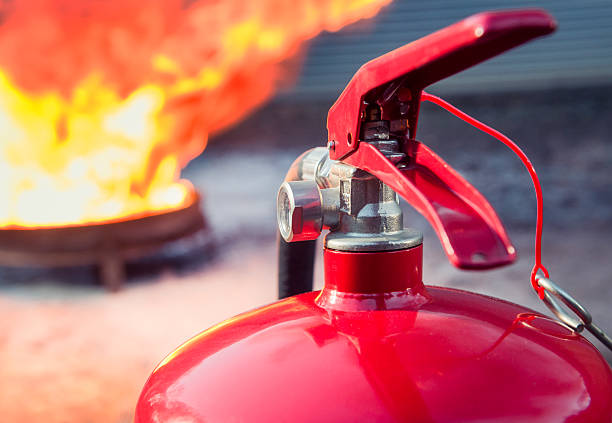
Commercial fire safety elements in buildings, such as fire sprinkler equipment, fire alarms, and fire extinguishers, are sometimes assumed to be solely physical, yet they are fire safety measures that only operate when there is a fire. While they are vital for building fire protection, there are also non-physical fire prevention and safety measures.
The importance of fire safety in buildings must not be underestimated. If you are unsure about the most vital fire safety precautions to take in your multi-location retail businesses, restaurants, grocery stores, large box stores, or distribution facilities, The Top 7 Preventive Fire Safety Features:
Building Access and Evacuation Routes
Most Important Fire Safety Measures in Buildings
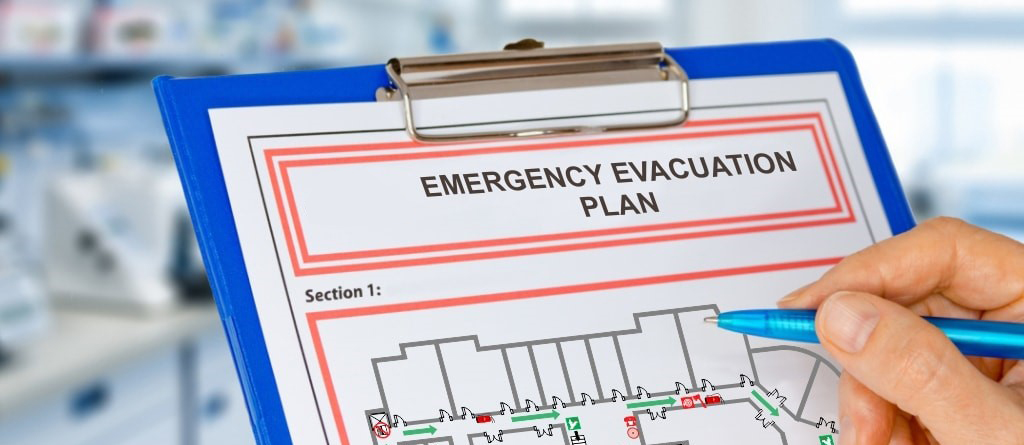
Building open spaces are one of the most important fire safety measures for fire prevention and control. According to the National Fire Protection Association (NFPA), doors, windows, and all entry into and out of your facilities must be kept free so that residents can readily use emergency evacuation routes and the fire department can get in.
Ensure that your facilities have clear access to fire doors, overhead doors, and other outside doors, as well as corridors, walks, stairways, windows, and outdoor spaces such as fire hydrant routes. Shopping carts, deliveries, automobiles, garbage cans, or landscaping cannot obstruct these zones. By doing this every day, you are covering one of the most important fire safety aspects in buildings.
Fire Exit Signs and Fire Alarms
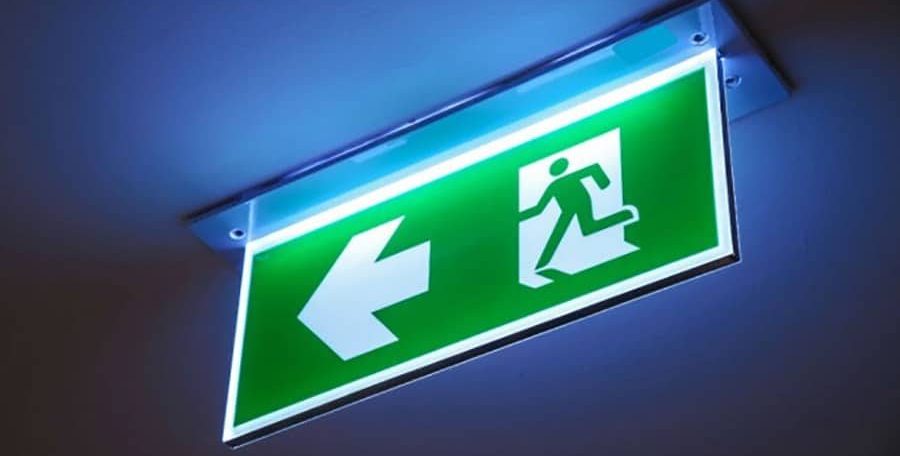
As important as unblocked exits are to fire safety, people finding the exits is an equally important safety measure in your buildings. NFPA requires exit signage and lighting to be continually illuminated and easily seen, even in a power outage. Exit signs must be bright and free from obstruction, emergency lighting units functional, and exit signs and lighting backup batteries should be fully charged and reliable.
Fire alarm systems go hand in hand with exiting the building during a fire or other emergencies. These fire prevention systems in buildings include the fire alarms themselves, all components that make them work, those that feed into the alarms, and those that are connected to them (fire sprinklers, smoke detectors, heat detectors, evacuation systems, etc.). They detect and alert people to many different life-threatening and property-damaging hazards besides fire, from carbon monoxide poisoning and leaky pipes to severe weather and active shooters. Therefore, it is critical that they function 100% of the time.
Develop Good Daily Habits
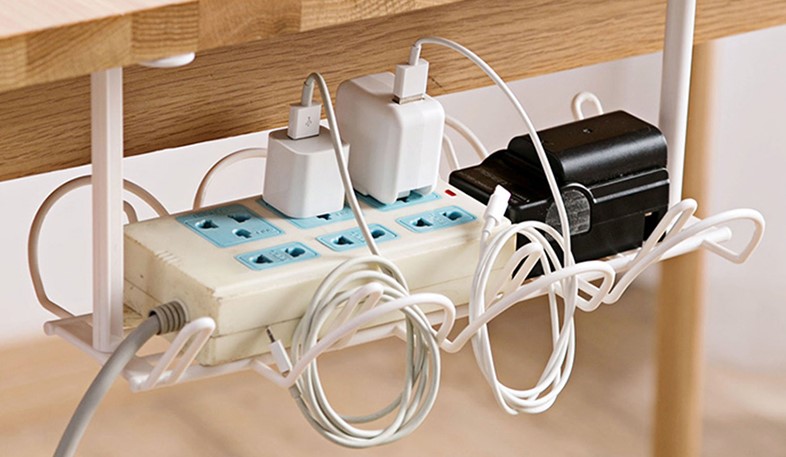
Develop Good Daily Habits
There are several situations in the workplace where fire threats might grow. Fire safety prevention is dependent on dedication, training, and excellent practices, whether you operate or manage grocery shops, distribution facilities, retail stores, or restaurants.
10 everyday fire prevention and safety precautions to reduce fire hazards:
• Trash/waste is properly disposed of in trash/recycling containers and is not stacked up in any place, particularly in the doorway.
• Extension cords should not be used indefinitely; those that are should be industrial quality and grounded.
• All power strips include UL certification and built-in circuit breakers.
• Cigarette butts and containers should be kept away from the structure, shrubs, and flammable items.
• Combustible materials/liquids are safely housed in an authorized cabinet in accordance with NFPA requirements.
• Electrical appliances are GFCI protected; nothing hot is turned on unless someone is there.
• Nothing is dangling from fire sprinkler tubes or spray heads.
• Fire pump rooms/riser rooms are completely devoid of everything other than fire prevention equipment.
• All supplies/stock/merchandise are at least 3 feet away from heating units and ducts.
• All fire extinguishers are properly charged, undamaged, and easily accessible; none are missing.
Preventative Maintenance & Inspections

Your top priority is to protect the lives of the people who reside in your buildings. Because it is impossible to forecast when a fire would endanger their lives, proactive fire prevention system checks are your greatest deterrent against a malfunctioning system that may not function correctly when needed.
There are also steep sanctions for failing to follow NFPA 72 inspection criteria as well as those of your insurance carrier.
Inspections are necessary on a regular basis for:
• Fire sprinkler systems
• Backflow preventer assemblies
• Fire suppression systems
• Kitchen hood suppression systems
• Fire alarms • Fire extinguishers
• Alarms, monitors, detectors
These inspections will identify any issues that need to be addressed so that maintenance may be carried out. Keeping your fire protection systems operational is critical to preventing building fires and halting fires before they spread.
Train employees on fire prevention and safety measures in the workplace.
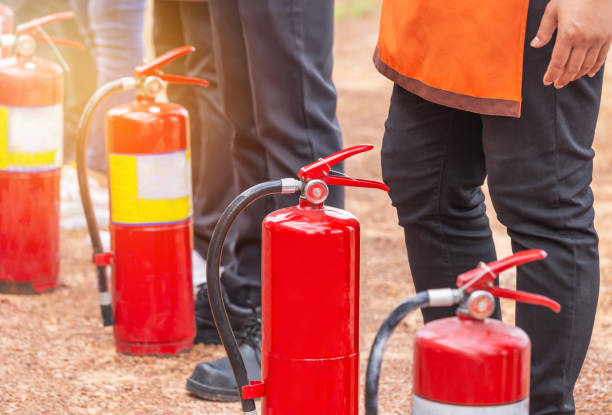
Human mistake is a common cause of the fire. This might take the shape of carelessness, unintentional errors, poor equipment use, or a lack of fire safety training. The first step in protecting your retail stores, grocery stores, big box stores, warehouses, restaurants, or distribution centres and their occupants from fire is to educate employees on the causes of fire, train them to use fire extinguishers, encourage vigilance and a daily fire-safety prevention routine, and hold annual, mandated NFPA fire-safety training sessions.
You must guarantee that your employees are appropriately taught fire prevention and safety procedures. Also, encourage personnel to immediately report any possible fire concerns. Only via fire safety prevention and life-safety training can your personnel be able to prevent fires, put out fires, and safely escape in the case of a fire. Customers and employees are best protected from fire hazards when NFPA fire-safety standards are followed. It also ensures that your personnel is aware of the overall fire prevention regulations for structures.
